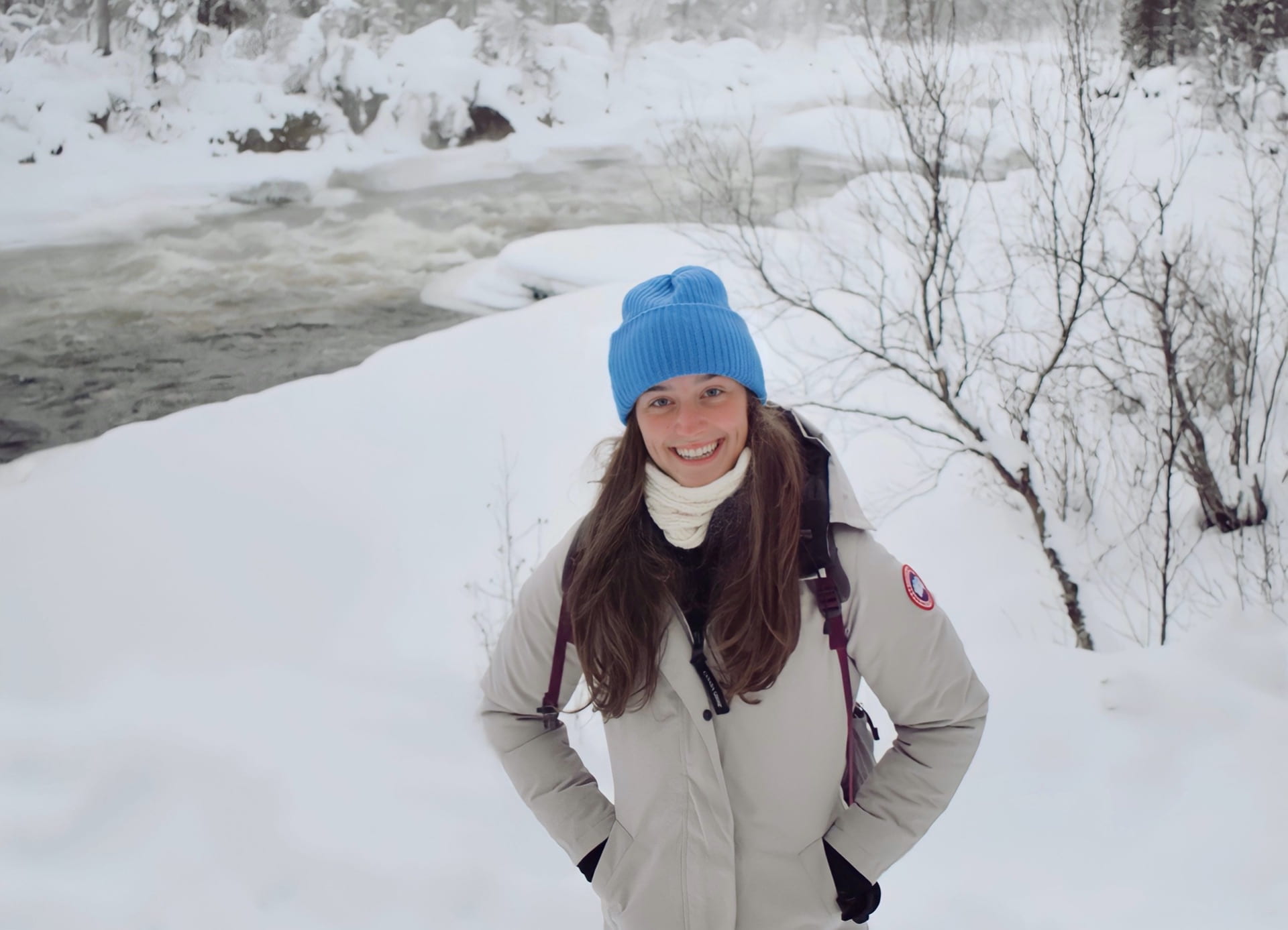Caroline Groves is an honors biology student on the pre-dental track from Monticello, Arkansas. Last January, she travelled to Finland to research climate change’s impact on reindeer food supplies in the Arctic through an analysis of teeth samples.
Climate change and human invasion have been detrimental to the traditional food sources of many Arctic species. My research project focuses on discerning the extent that diminishing food supply in the Arctic has had on reindeer. Their altered diets can be understood through the analysis of their teeth. Dental microwear texture analysis can be performed to see scratches and/or pits, alluding to what the reindeer are eating.
Harrison Lowe, my research partner, and I recently got the opportunity to travel to Inari, Finland to further our research. We thought it would be incredible to see firsthand the habitat that these animals live in. Professor Peter Ungar, our research mentor, agreed, and we worked to turn our dream into reality. This would not have been possible without the generosity of the Honors College. We received an Honors College Research Team Grant and an Honors College Short Term Research Travel Grant, which made this trip attainable.
Inari is a small village in Northern Finland about 300 km north of the Arctic circle. It was the selected destination because it contains the Inari branch of the Natural Resources Institute in Finland (LUKE). Here lies a large collection of reindeer jaws from fifteen different reindeer districts in Lapland, Finland. There is extensive data on each region’s bioclimatic zone, vegetation species, and degree of human encroachment. This information is critical for drawing connections between district conditions and district diets.
Professor Ungar had previously visited this institute and made molds from six of the districts. The goal of our recent visit was to make molds from the nine remaining districts. Upon arrival, we were taught how to properly clean the teeth and make dental impressions that included the first and second molars. Twenty-five jaws per district and year were randomly selected to be molded. Over the span of a week, Harrison and I successfully made nearly 200 molds and 368 mandibles were photographed, thereby doubling our initial sample size.
An unexpected observation of extreme wear or even complete loss of first molars was rampant in the specimen collection. Fruit and artificial feed consumption has increased as a result of the lichen shortage. So, I suggested this first molar mystery could be due to the altered diets being more acidic. Acidity can cause enamel demineralization, softer teeth, increased abrasion, and bone loss. Acid heavily affects tooth prism patterns, so this reasoning will be easily confirmed or rejected when the teeth are viewed under a microscope.
As a predental student, this trip was fascinating and undoubtedly beneficial to my professional development. To make impressions, we used polyvinylsiloxane dental impression material. This is the same material being used by practicing dentists. I also saw severe cases of alveolar resorption and enamel hypoplasia. These defects are not exclusive to reindeer; they are also common in the human dentition.
Our project is part of a much larger study. Many experts in the field including Jouko Kumpula, Mikael Fortelius, Ilpo Kojola, Kirsi Muuttoranta, and Bruce Forbes are contributors to this research. I was lucky enough to be included in a meeting with them to discuss project progress and future plans. This meeting put the project into a broader context for me. I realized how crucial solving this issue is for Finland. Reindeer are semi-domesticated in Finland, and herders are committed to improving the health of their animals. Without proper nutrition, lifespans are reduced and female reproduction is less efficient.
Since returning, dental replicas have been completed for the majority of the molds. These replicas can now be microscopically analyzed. This will allow for tooth wear comparisons to be made between and within reindeer districts. Going into the lab is what I look forward to every week, and I can not wait to see what comes of this project!



